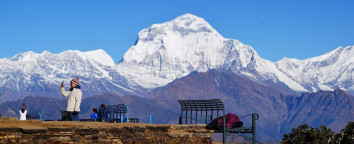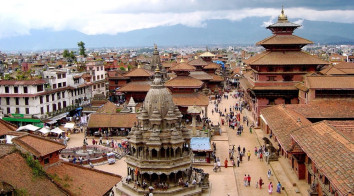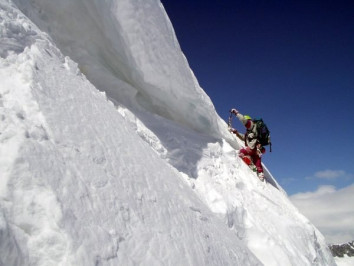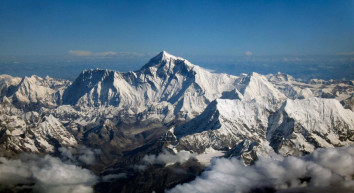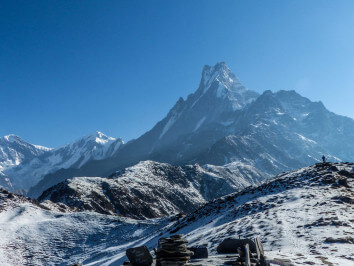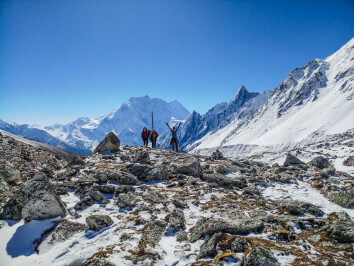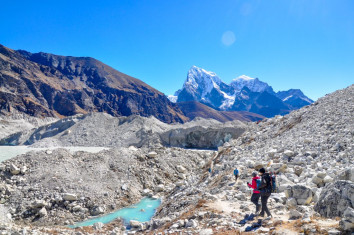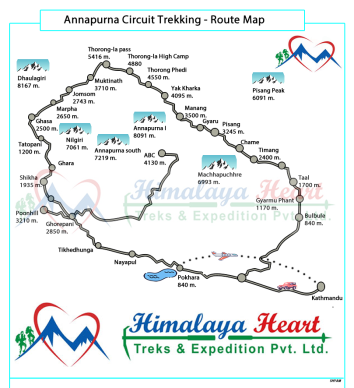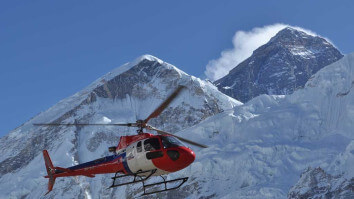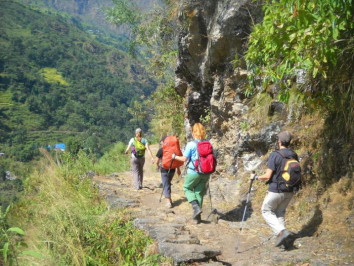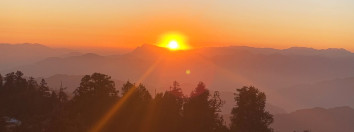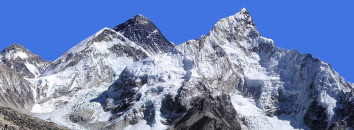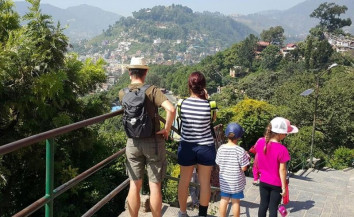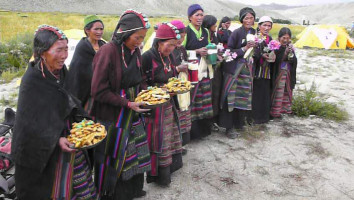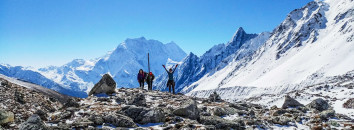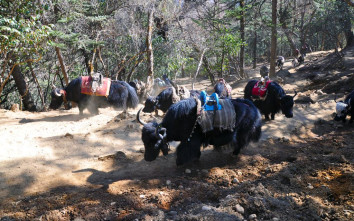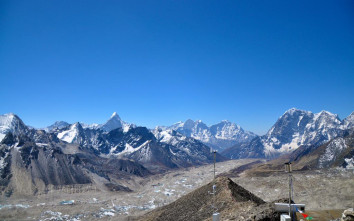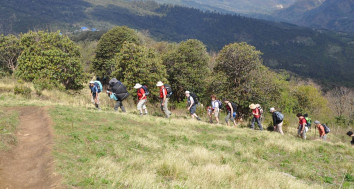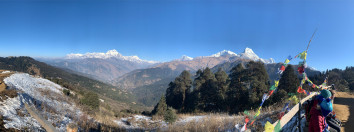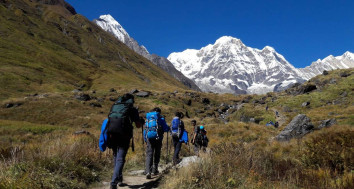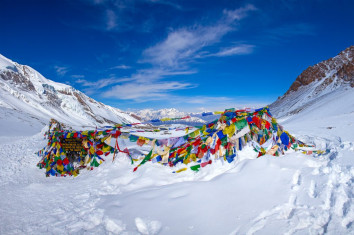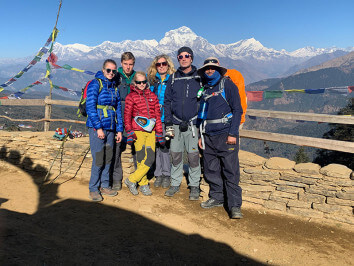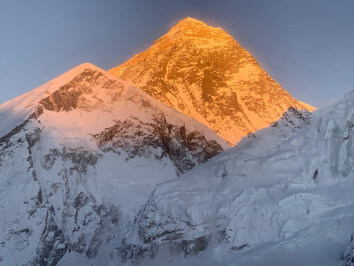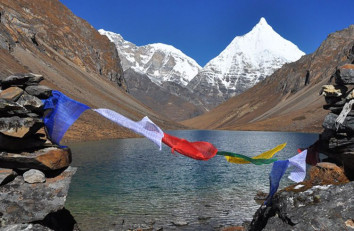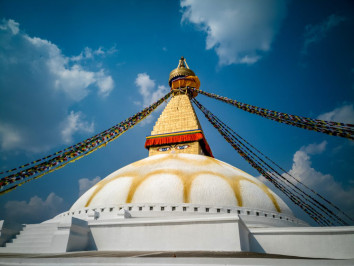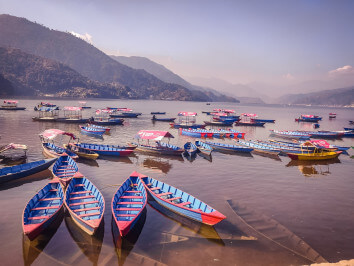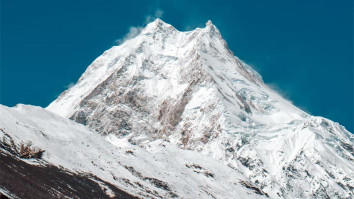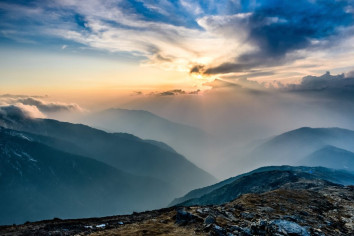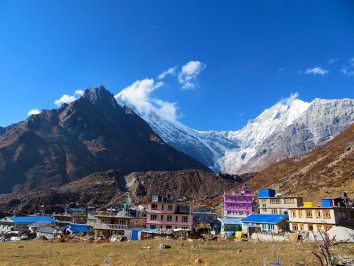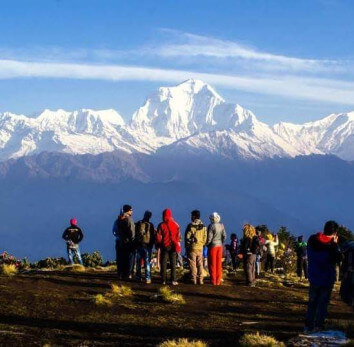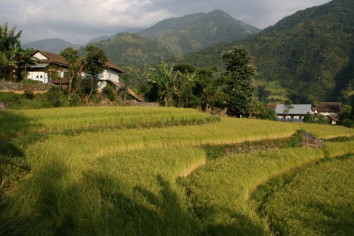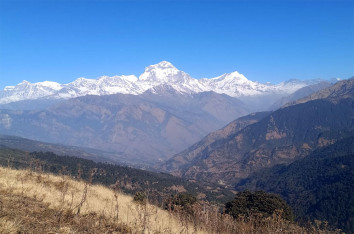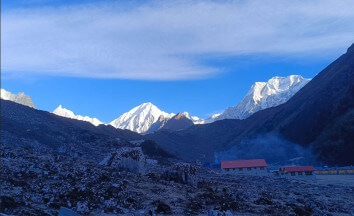6th Oct, 2023
8 Top Trekking Area in Nepal
- himalayaheart
8 Top Trekking Area in Nepal
Nepal, renowned globally as a trekking paradise, boasts eight incredible trekking regions that captivate adventure enthusiasts and nature aficionados alike. From the towering heights of the Everest Base Camp to the scenic trails of the Annapurna Base Camp, the options are as vast as they are breathtaking. In addition to the majestic vistas of the Himalayas, trekkers can immerse themselves in the beauty of high-altitude, turquoise-hued lakes, navigate challenging mountain passes, and revel in picturesque landscapes. But Nepal's appeal isn't just its natural wonders; the country offers a deep dive into its rich cultural tapestry. As one wanders the trails, encounters with the indigenous communities in remote mountain villages provide insights into their age-old traditions and lifestyles. For those considering a trekking expedition in Nepal, it's not just about choosing the right trail; understanding the necessary permits and setting expectations is equally vital. In essence, Nepal promises an unmatched blend of adventure, nature, and culture.
Table of Contents
1.Everest Base Camp Trek: An Insight into the Everest Region
The Everest Zone, also referred to as Sagarmatha National Park or Khumbu Trekking Area
The Everest area stands as Nepal's crowning jewel for trekking enthusiasts. This region, cradling the world's tallest peak, Mt Everest, at 8,848m, boasts some of the globe's most enchanting trek routes. An expedition here is not just a rendezvous with the majestic Everest but also an intimate experience with the indigenous Sherpa culture. Moreover, trekkers are treated to awe-inspiring vistas of towering peaks and a journey that meanders from dense forests to stark terrains.
Navigating to the Everest Trekking area:
Given its fame, reaching the Everest trekking region has multiple avenues. The quickest and most popular mode is via air, with daily flights operating from Kathmandu to Lukla, which serves as the primary entry point to this region. However, for those inclined towards road journeys, there's an option to drive to Salleri and then trek up to Lukla. Although this terrestrial journey offers its unique experiences, it's lengthier and necessitates additional days for trekking. For the sake of convenience and mesmerizing aerial views, most trekkers prefer the brief 30-minute flight to Lukla airport. Travelers should be aware that these flights are susceptible to delays or cancellations due to unpredictable mountain weather, hence having a flexible schedule is advisable.
Gokyo Lake Trek in the Everest Region:
The Gokyo Lake Trek takes you on a mesmerizing journey through the heart of the Everest region, moving in a clockwise direction. Beginning its divergence from the classic Everest Base Camp trail post the Namche Bazaar, this trek leads adventurers towards the sacred Gokyo Lakes. A favorite among photographers, the hike to Gokyo Ri offers unparalleled views, ranking it among Everest's most scenic spots. An added attraction is the ability to reach Everest Base Camp after crossing the Cho La Mountain Pass, standing tall at 5,420m.
The Everest Three High Passes Adventure:
Considered one of the lengthiest and most challenging routes in the Everest region, the Three High Passes trek offers an experience like no other. Adventurers have the choice of taking a clockwise or counter-clockwise route, traversing the region's three renowned high passes: Renjo La (5,360m), Cho La (5,420m), and Kong Ma La (5,540m). These passes not only challenge your stamina but reward with breathtaking panoramas, making them a photographer's delight. If you're looking to truly experience Everest's grandeur, this trek is your call.
A Glimpse with the Everest View Trek:
The Everest View Trek is a shorter venture that promises captivating vistas of the Himalayas. While it follows the same path as the Everest Base Camp trek, it detours at the Tengboche Monastery, marking its endpoint. Ideal for those with time constraints or those not keen on enduring rigorous hikes, this trek still promises a generous glimpse of the towering Everest.
Trekking Difficulty in the Everest Zone:
The Everest region offers treks that cater to a wide range of expertise. While beginners can attempt the Everest Base Camp and Everest View treks after some physical preparation, treks like the Three High Passes and Gokyo Lake are more suited for those with a decent fitness level. While the paths are generally non-technical, altitude and length of trekking days can pose challenges, especially for newcomers.
Required Permits for Everest Treks:
Trekking in the Everest region necessitates specific permits. Entrants to the National Park are charged around 30 USD, while another permit for the Pasang Lahmu rural municipality costs about 20 USD. Additionally, if one opts to begin from Jiri (bypassing the flight to Lukla), a TIMS- Card, provided by the local Pasang Lamhu Rural Municipality, becomes essential. These permits not only grant access but also contribute to the maintenance and betterment of these beloved trails for future adventurers.
2. Annapurna Conservation Area Trekking:
Renowned for its diverse landscapes and cultural richness, the Annapurna Conservation Area stands out as a favorite among trekkers worldwide. It ranges from lush forests to stark, rocky terrains, offering trekkers a mix of natural and cultural experiences. The Annapurna region guarantees breathtaking Himalayan vistas and insight into the local culture.
Getting There:
The primary access point to the southern trails of the Annapurna range is Pokhara, which is well-connected to Kathmandu by road and air. Starting the journey usually involves a short drive to Nayapul. For those embarking on the northern trails, a drive to Beshisahar followed by a jeep ride to Chame is common. Alternatively, trekkers can initiate their journey from the Manaslu region and then cross the Larke La Pass.
Popular Treks:
Annapurna Base Camp Trek: A well-loved route, this trek offers varying landscapes and culminates at the Annapurna Sanctuary. It's possible to reach the Base Camp by helicopter from Pokhara.
Ghorepani Poon Hill Trek: A shorter trek, famous for the panoramic views from Poon Hill, especially of Mt. Dhaulagiri, Annapurna South, and the unique fishtail-shaped Mt. Machhapuchhare.
Mardi Himal Trek: This trek primarily showcases Mt. Machhapuchhare and can be combined with other treks in the region for a more extended experience.
Annapurna Circuit Trek: This challenging trek circles the Annapurna massif, offering stunning views of valleys, peaks, and passes, most notably the Thorong La Pass.
Tilicho Lake Trek: An offshoot of the Annapurna Circuit, this trek leads trekkers to the world's highest situated lake, Tilicho.
Nar Phu Valley Trek: A secluded trek showcasing the remote villages of Nar and Phu, reflecting Tibetan culture and traditions.
Other Trek Options:
Beyond the well-trodden paths, the Annapurna Conservation Area offers other treks like the Honey Hunting Trail, Poon Hill Jomsom, Machhapuchhare Model Trek, Royal Trek, Daphne Trek, and Tamu Heritage Trek.
Trekking Difficulty:
The difficulty of treks varies in the Annapurna region. While Ghorepani Poon Hill and Mardi Himal are suitable for beginners, the Annapurna Circuit and Nar Phu Valley are more demanding and require a good level of fitness.
Required Permits:
For access to the Annapurna Conservation Area, two permits are essential: the Annapurna Conservation Area Permit (ACAP) priced at about 30 USD and the TIMS card costing around 20 USD. Booking through a trekking agency often ensures these permits are covered, simplifying the process for trekkers.
3. Mustang Valley Trekking: A Hidden Gem
Recognized by CNN Travel as a top destination to visit in 2023, the Upper Mustang Valley is a mesmerizing trekking destination in Nepal. Located adjacent to the Annapurna region and accessed by crossing the Kali Gandaki River from Kagbeni, the Mustang area stands out for its distinctive Tibetan cultural influences. The region is divided into Upper and Lower Mustang, with the former being renowned for adventures like jeep, mountain bike, and motorbike tours. Its landscape, reminiscent of America's Wild West, comprises barren expanses, picturesque villages beside rivers, and striking hilltop monasteries. Lo Manthang, an ancient city enclosed by stone walls and home to the historic king of Lo, remains a prominent attraction.
Reaching Mustang:
Jomsom serves as the primary entry point to Mustang. You can either fly to this riverside city or access it by road. Moving north from Jomsom alongside the Kali Gandaki River, trekkers arrive at Kagbeni's apple orchards. A bridge here leads directly into the heart of Mustang. Adventure enthusiasts often motorbike from Pokhara to Jomsom, continuing deeper into Mustang, while others opt for a flight journey from Kathmandu to Pokhara, followed by a transfer to Jomsom.
Noteworthy Treks in Mustang:
Upper Mustang Trek: Opened in 1992, this trek is a highlight for many. Leading to the city of Lo Manthang, the trail offers insights into ancient monasteries and unique cave villages, providing glimpses of the region's unique culture and survival tactics in a rugged environment. This trek is versatile, accommodating trekkers, jeep enthusiasts, and motorbikers.
Lower Mustang Trek: Popular among local travelers, this trek is typically a combination of hiking and jeep return. Trekkers often establish a base in locations like Maprha, Jomsom, or Kagbeni, making daily excursions to various parts of Lower Mustang. Key attractions include the Muktinath Temple and the village of Lubra, a repository of ancient Bon Buddhist traditions.
Trekking Difficulty:
Mustang offers a relatively relaxed trekking experience, suitable for novices. Both Upper and Lower Mustang treks are user-friendly, with well-maintained trails and moderate altitudes. Although the region might not match the Annapurna Conservation Area in terms of mountain vistas, it promises equally breathtaking views.
Necessary Permits:
For the Mustang trek, you'll need permits for both the Annapurna and Mustang regions. The Annapurna region requires an ACAP permit costing around 30USD. For Mustang, a compulsory special restricted area permit is priced at about 500USD. Though it might seem steep, the unique and rewarding experiences Mustang offers make every penny worth it!
4.Manaslu Conservation Area Trekking
Manaslu Conservation Area: A Hidden Paradise
With Mt. Manaslu, the world's eighth tallest peak as its crown jewel, the Manaslu Conservation Area stands out as a serene and lesser-explored trekking destination in Nepal. Among the renowned treks here are the Manaslu Circuit Trek, Manaslu Base Camp Trek, and the Tsum Valley Trek. The local culture, heavily influenced by neighboring Tibet, adds a distinct charm to the experience. Trekkers can immerse themselves in Nepal's pristine Himalayan wilderness, untouched by urban sprawl. While the Manaslu Circuit Trek connects to the Annapurna Conservation Area, the Tsum Valley Trek delves deep into Manaslu's unique cultural heritage. Many have found their journey through Manaslu to be profoundly spiritual.
Getting to Manaslu:
Accessible only by road, a bus ride from Kathmandu leads trekkers to Arughat bazaar. Another short drive gets you to Soti Khola, the primary entry to the Manaslu region. While many adventurers might venture further west to the Annapurna region, Soti Khola and Arughat remain the exclusive entry and exit points for those solely exploring Manaslu.
Featured Treks of Manaslu:
Manaslu Circuit Trek: Less frequented, this trek offers a more intimate experience. It encircles the Manaslu region and extends into the Annapurna region. The trek's pinnacle is the Larke La Mountain Pass (5,160m), granting breathtaking Himalayan vistas, even extending to Tibetan peaks on clear days.
Manaslu Base Camp Trek: Taking adventurers to the base camp of the world's eighth highest peak, this trail is shared with the Manaslu Circuit Trek until diverting before Samdo village. Following the excursion to the base camp, the trek continues its path over the Larke La Pass.
Tsum Valley Trek: This culturally-rich trek traverses the Tsum Valley and visits iconic Gompas like Mu Gompa and Dhephyudonma Gompa. A significant draw is the Ganesh Himal Base Camp, elevated at 4,200m, showcasing nature, mountains, and culture at its finest.
Trekking Challenges in Manaslu:
The treks in Manaslu, being relatively untouched, offer rugged terrains and rustic accommodations. Pre-trek fitness training is essential for trekkers to comfortably navigate from dense forests to higher rocky terrains. Although not overly technical, the treks are undoubtedly challenging.
Required Permits:
Depending on your chosen trek, permit requirements vary. For the Manaslu region, three main permits are needed: MCAP at 30 USD, M-RAT at 100USD for the first week (autumn) and 75USD for other seasons. Additionally, there's a 15USD fee for each extra day in autumn and 10USD otherwise. If you're trekking into the Annapurna Conservation area, an additional ACAP permit, priced at 30USD, becomes necessary.
5. Exploring Langtang National Park Trekking Area
Langtang National Park is Nepal's first national park. Located near Kathmandu and close to Tibet, it's famous for short trekking trips. Visitors can enjoy views of mountains like Ganesh Himal and Mt. Manaslu. Popular sites in the park include the Lauribinayak Mountain Pass, Lantang Lirung mountain, Kyanjin Gompa (a monastery that became a village), Lake Gosaikunda, and two viewpoints Kyanjin Ri and Tsergo Ri.
How to Get There? To get to Langtang, take a drive from Kathmandu to Syabru Besi. This drive is scenic, passing through calm countryside and away from the hustle of the city. While there are local buses, hiring a private vehicle like a jeep is more comfortable for the 6-7 hour journey.
Popular Treks in Langtang:
Langtang Valley Trek: This 11-day trek includes stops at Kyanjin Gompa, Kyanjin Ri, Tsergo Ri, a yak cheese factory, and showcases the local Tamang culture. The trek is a bit challenging because of its uneven path, especially considering the village's rebuilding efforts after the 2015 earthquake.
Tamang Heritage Trek: This is a cultural trek in the park focusing on the Tamang community's lifestyle. A highlight is the Nagthali Ghyang viewpoint. The trek also offers a chance to stay with a local family.
Kyangja La Pass Trek: This adventurous trek crosses the Langtang Valley and includes a challenging pass, Kyangja La Mountain Pass. After passing icy regions, trekkers can experience a lush green area full of wildlife.
Gosaikunda Sundarijal Trek: A favorite among both locals and tourists, this trek centers around the holy Gosaikunda Lake and the Lauribinyak Pass. It's a peaceful trek where you might spot lots of wildlife.
Helambu Circuit Trek: This is more of a village-based trek, showcasing the southwestern part of the park. The Yolmo people, known for their hospitality, live here. You'll pass through villages like Kutumsang and Melamchi Gaon.
Short Helambu Trek: A shorter version of the Helambu Circuit, it includes viewpoints at Chisopani and Tharepati. It's perfect for those short on time.
Other treks include the Langtang Gosaikunda Melemchi and another Langtang Valley version.
Is It Hard to Trek Here? While most treks in Langtang are beginner-friendly, the Kyangja La Pass trek can be tough and technical. However, hiring porters or guides can make the trek more manageable.
What Permits Do You Need? If you're trekking in Langtang, you'll need two permits. The first is the Langtang National Park Permit which costs about 30 USD. The second is the T.I.M.S-card priced at 20 USD. If you start your trek from Syabru Besi, you'll also have to pay an entrance fee for Shivapuri National Park, which is around 5 USD.
6. Exploring the Dolpo Trekking Area
The Dolpo area in Nepal offers a trekking experience that feels like exploring Tibet, with its desert-like valleys. Treks here focus on spiritual sites like Phoksundu Lake and Shey Gompa. The beautiful views of Crystal Mountain and serene lakes stand out. The area has a history as a salt trading path with Tibet, which influences its culture. You'll find Tibetan Buddhist sites, old monasteries, and traditional villages.
Getting to Dolpo:
Flight: The quickest way is to fly. First, you take an hour's flight from Kathmandu to Nepalgunj. The next day, another short flight gets you to Juphal, the starting point for Dolpo treks. You can also fly to Jumla or, if heading from Rara Lake, fly to Talca.
Land: This takes longer. You can hire a vehicle or take a local bus. The journey, depending on transport, lasts 8-14 hours, heading from Kathmandu to Jumla via Surkhet.
Mixed Route: This combines flying and driving. Fly from Kathmandu to Pokhara, then drive to Beni and further to Takam.
Popular Dolpo Treks:
Upper Dolpo Trek: This 25-day journey is a mix of staying in guesthouses and camping. It's adventurous, taking trekkers through tricky paths, fields, and leading to the Phoksundu Lake, Nepal's deepest. A visit to Shey Gompa and views of Crystal Mountain are also highlights.
Lower Dolpo Trek: Though less popular, this trek offers the challenge of crossing two high passes, Numa La and Baga La. It also includes exploring traditional villages and the beautiful Shey Phoksundu Lake.
Is Dolpo Trekking Hard? Dolpo treks are not technically hard but can be physically demanding because of the rugged trails. If needed, trekkers can hire a pony for some parts of the trek. Building stamina and fitness is recommended before starting.
Permits for Dolpo: Three permits are needed. The Shey Phoksundu National Park Permit costs around 30USD. The Lower Dolpo trek requires an additional permit at 20USD for the first week and 5USD for extra days. The Upper Dolpo trek needs an additional permit costing around 500USD.
7. Kathmandu Valley Trekking Area
The Kathmandu Valley area is perfect for easy and short treks. Surrounded by green hills, it has beautiful spots like the Shivapuri National Park, the hill village Nagarkot, ancient monasteries, and traditional villages where you can learn about local customs.
Getting to the Area: Kathmandu is the main point for all travels in Nepal since the international airport is there. For the treks in the valley, you can use local buses, taxis, or rent a car.
Popular Treks:
Chandragiri Hill Trek: Starting from Machegaun, this trek leads you to a temple on a hilltop. If you're tired, there's a cable car too.
Namo Buddha Panauti Trek: A cultural trek, it takes you from Dhulikhel to a famous monastery, Namo Buddha, and then to the old village, Panauti.
Chisopani Nagarkot Trek: A three-day trek from Sundarijal to the village Chisopani, then to Nagarkot, known for its sunsets and sunrises. Optionally, you can also visit the Changu Narayan temple or Bhaktapur on your return.
Kathmandu Valley Trek: Explore various parts of Kathmandu daily. Visit Shivapuri, Dakshin Kali Temple, or even farther places like Chitlang and Markhu Lake.
Difficulty: Trekking here is pretty straightforward, with some routes having steep paths. It's suitable for all ages, from kids to seniors. Some endurance is good to have but isn't strictly necessary.
Permits: You don't need special permits for these treks. Some areas have a small entrance fee, usually less than 10 USD. While a guide isn't mandatory, having one can provide a richer experience.
8. Pokhara Valley Trekking Area
Pokhara Valley is known for its beautiful views and is a starting point for many treks in Nepal. This place is surrounded by green hills and offers views of the Fishtail Mountain. Trekkers can visit places like the World Peace Shanti Stupa, Panchase village, Dhampus hill, and Sarangkot.
Getting There: It's easy to reach Pokhara. You can fly or drive from Kathmandu. There are daily buses, and you can also hire a motorbike or go rafting to get there. Soon, there will also be an international airport in Pokhara.
Popular Treks:
Mardi Himal Trek: A short trek with close-up views of Mt Machhapuchhare.
Short Poon Hill Trek: Known for sunrise views over the Annapurna Range.
Royal Trek: Offers beautiful villages, lakes, and mountain views.
Gandrung Village Trek: Visit a big village and learn about Gurung culture.
Panchase Trek: Starts by crossing Phewa Lake and offers an authentic experience with homestays.
Dhampus Sarangkot Australian Camp Trek: A simple trek with fantastic views and cultural experiences.
Difficulty: Trekking in Pokhara Valley is generally easy and suitable for everyone. But during rainy seasons, trails can be slippery.
Permits: For treks in the Annapurna area, you need a permit costing about 30USD. For shorter hikes around Pokhara, no permit is needed, but having a guide can make the experience richer.
Final Note:
Nepal offers diverse trekking options. Whether you want short or long treks, cultural experiences, or high-altitude challenges, there's something for everyone. Many trekkers come back to Nepal to explore more, as there's always something new to see.
Recent From Blog
